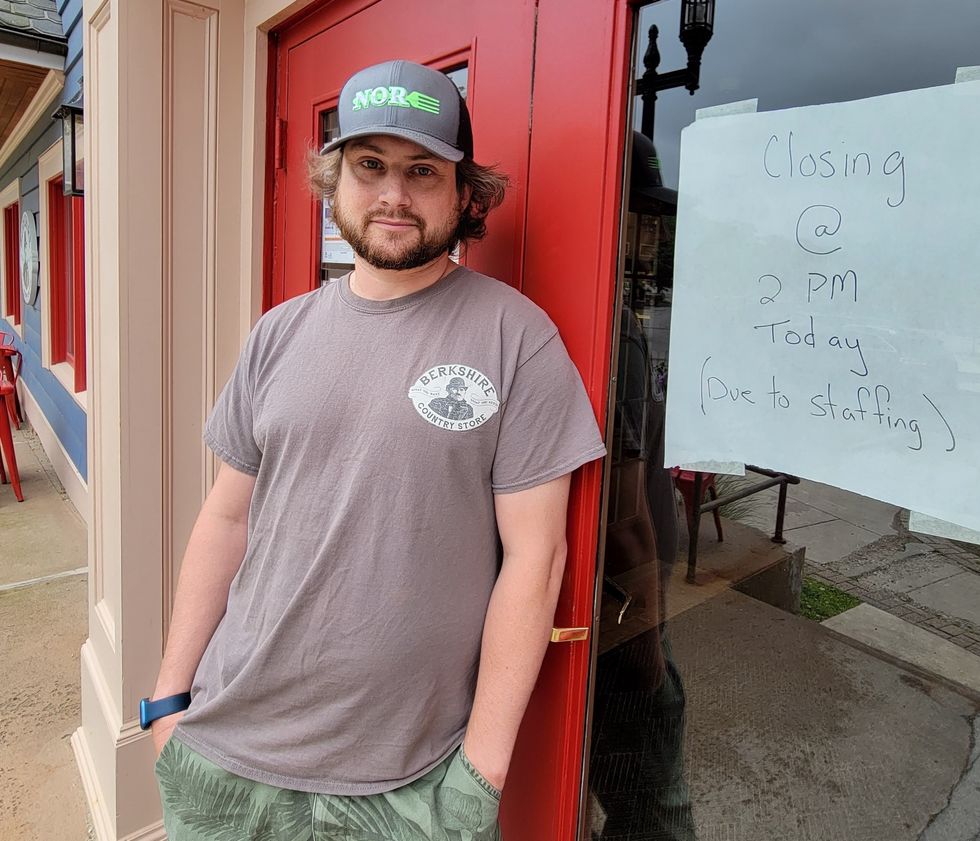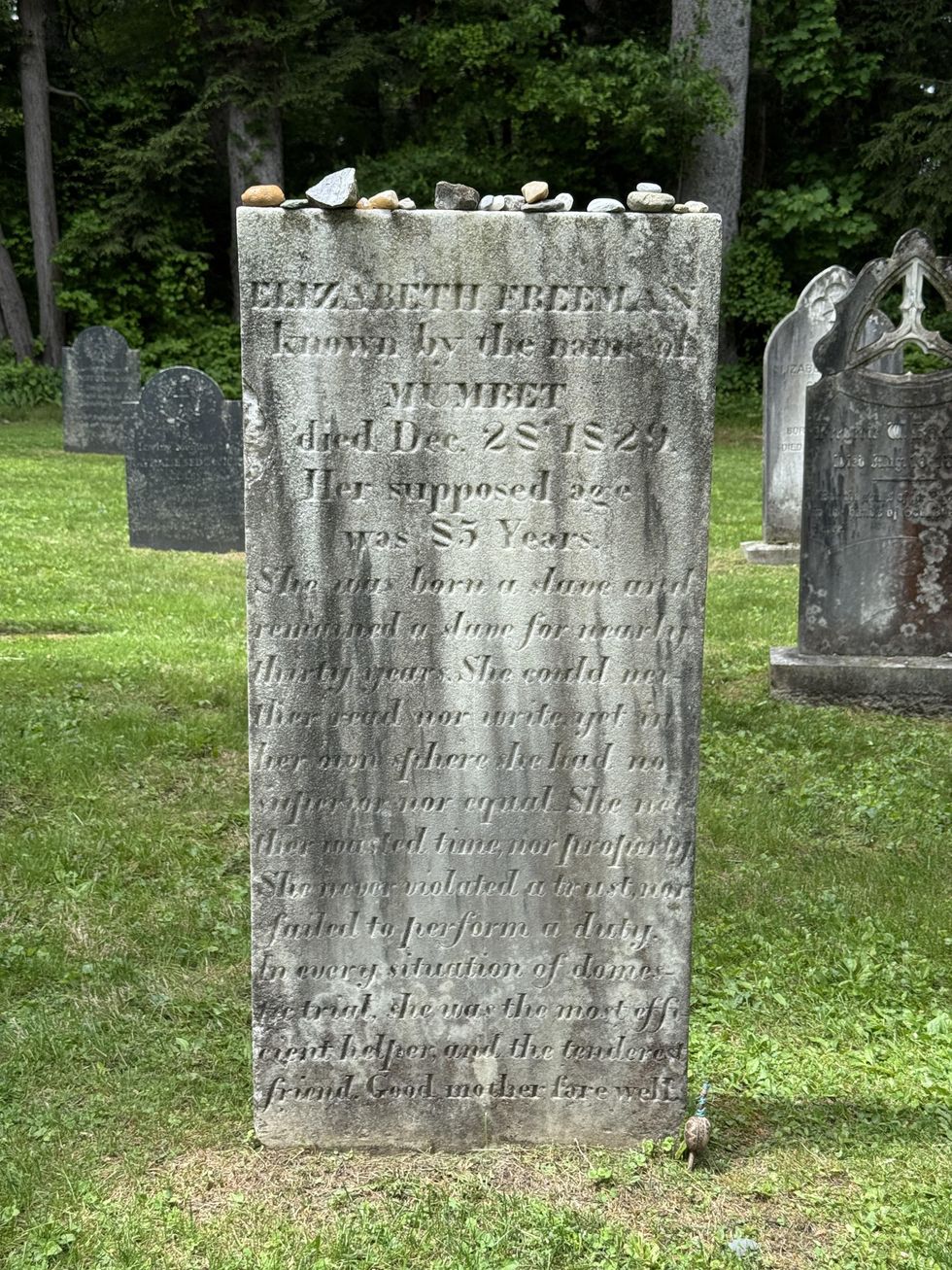Jobs are back, but where are the workers?
The Great Reshuffle

Ryan Craig, owner of Berkshire Country Market in Norfolk, posted a sign on the door of his business alerting customers to early closing hours due to a staffing shortage.
Photo by Debra A. Aleksinas







 Tombstone of Elizabeth Freeman in the “Sedgewick Pie” family burial ground in Stockbridge, Massachusetts. Lonnie carter
Tombstone of Elizabeth Freeman in the “Sedgewick Pie” family burial ground in Stockbridge, Massachusetts. Lonnie carter 


